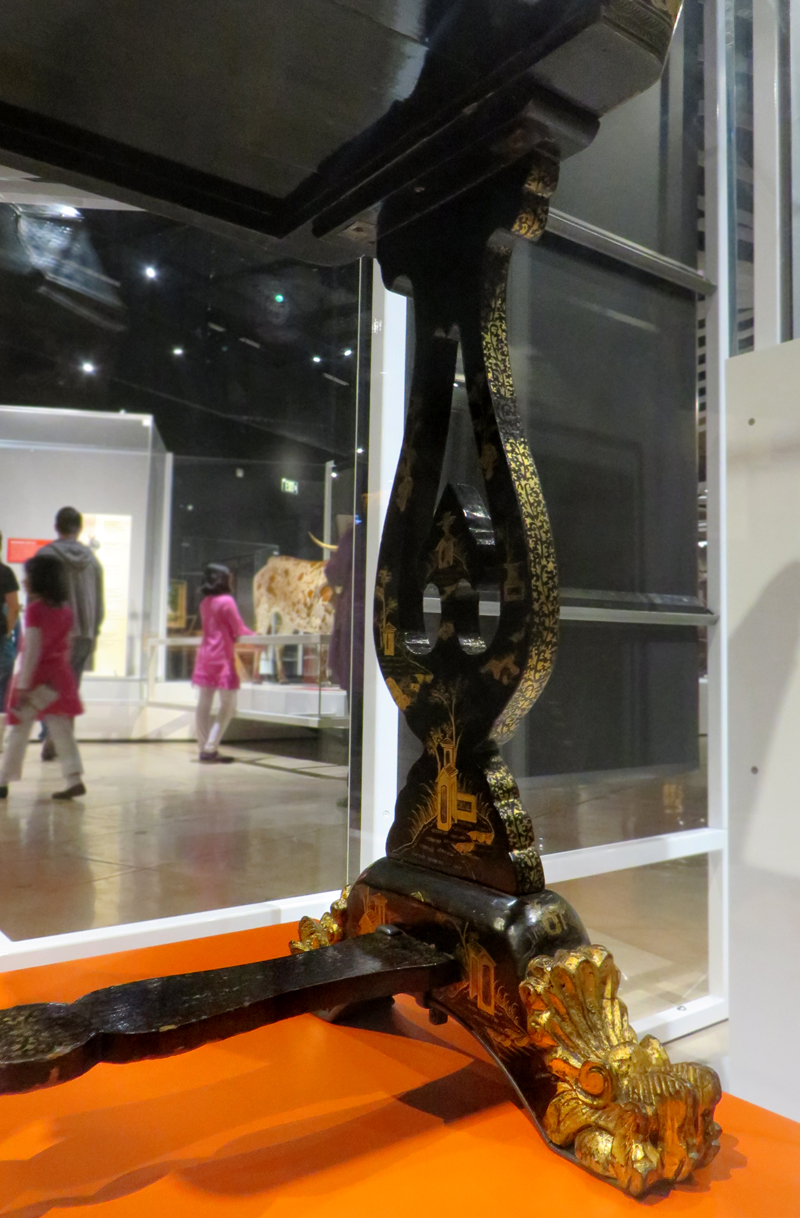|
|
Natural History Museum of Los Angeles County

Click image to enlarge
Del Valle family's Chinese import sewing table from the living room at Ranch Camulos, mid-1800s. On display in the Natural History Museum of Los Angeles County's permanent "Becoming Los Angeles" exhibit, which opened July 14, 2013. SCV Connection: This sewing table was a possession of the Del Valle family, who kept it at Rancho Camulos, which is historically the western edge of the Santa Clarita Valley. It was a part of the original 48,612-acre Rancho San Francisco, which stretched from Camulos on the west to the west side of present-day Canyon Country on the east. The Del Valles owned all of it beginning in 1839. Museum signage reads: Lacquer sewing stand imported from China / Mid 1800s. As cattle ranching became increasingly profitable, rancheros (ranch owners) were able to afford new material comforts. Luxury items from Asia were prized possessions for their unique beauty. This lacquer sewing stand from China was a showpiece in the Del Valle family's living room at Rancho Camulos in the San Fernando Valley [sic]. Note: Rancho Camulos isn't in the San Fernando Valley. It's not even in Los Angeles County. It's in Ventura County, 10 miles west of Valencia.
About NHMLA's "Becoming Los Angeles" Exhibit: The 14,000-square-foot permanent exhibition is the largest in the Museum. It tells stories in six major sections: Los Angeles and the region at the time of Spanish contact; the Spanish Mission Era; the Mexican Rancho Era; the early American Period; the emergence of a new American city in the late 19th and early 20th centuries; the Great Depression and World War II, to the present. Some of the stories are well known, such as how the acquisition of water through the Los Angeles Aqueduct in 1913 allowed Los Angeles to grow. But there are other natural and human influences might surprise you: how cattle, the Gold Rush, floods, a plague of grasshoppers, railroads, and outlandish booster campaigns all played a part in transforming the region into an agricultural and industrial empire; the pivotal role Los Angeles played in World War II; and the dynamic diversity of the earliest settlers. Come meet L.A.'s Native Americans, colonists and settlers; rancheros, citrus growers and oil barons; captains of industry, boosters and radicals; filmmakers, innovators and more.
LW2554d: 19200 dpi jpeg from digital image 11/23/2013 by Leon Worden. |
Index 
Actinolite Canoe by Ted Garcia 2012 x4
|
The site owner makes no assertions as to ownership of any original copyrights to digitized images. However, these images are intended for Personal or Research use only. Any other kind of use, including but not limited to commercial or scholarly publication in any medium or format, public exhibition, or use online or in a web site, may be subject to additional restrictions including but not limited to the copyrights held by parties other than the site owner. USERS ARE SOLELY RESPONSIBLE for determining the existence of such rights and for obtaining any permissions and/or paying associated fees necessary for the proposed use.









